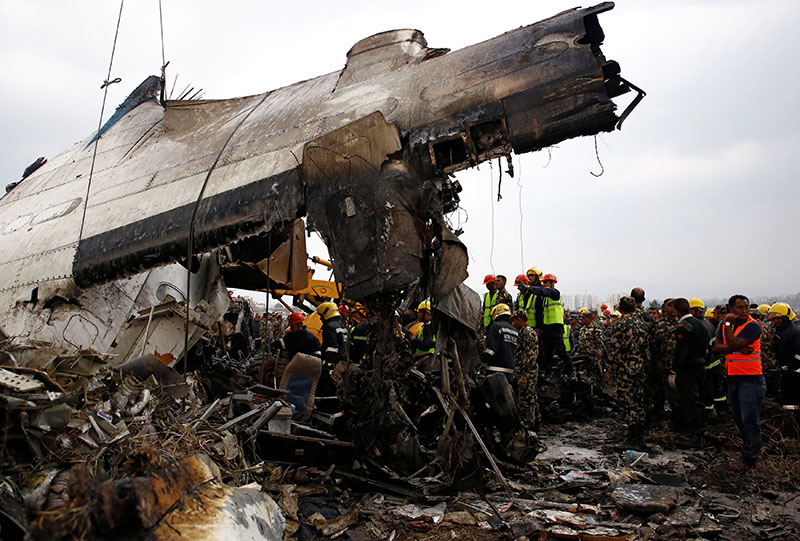US-Bangla Crash: Probe panel keeps factual info under wraps
Kathmandu, April 17
Though the US-Bangla investigation commission made public its preliminary investigation report of the crash last week, the panel, strangely, by keeping under wraps immediately available factual information on the flight crew and the air traffic controller, especially their aviation qualifications, has deliberately chosen to maintain suspense till the release of the final report.
According to experts, the possibility of the first officer, who was on her first flight to Kathmandu, operating the flight controls during the final approach under supervision of the commander with instructor credentials is a very distinct possibility. “Aviation abounds with examples of crashes with highly experienced captains and inexperienced co-pilots who exercised bad judgment at critical times,” an aviation expert told this daily.
Why the air safety regulator, Civil Aviation Authority of Nepal, while requiring as per its AIP notification, the pilot-in-command of the flight crew operating to Tribhuvan International Airport to have practiced the Kathmandu instrument approach on a simulator, has so far desisted from issuing regulations prohibiting foreign air carriers from allowing flight instructions to a novice without another experienced safety pilot in the cockpit jump-seat remains perplexing, he added.
“The commission has seemingly made a shoddy work of an exercise intended to be of serious safety consequences, including timely initiation of corrective actions and has only provided lip-service in the name of the report,” a source close to TIA claimed.
A preliminary report for an air crash investigation is defined by the International Civil Aviation Organisation as ‘the communication used for the prompt dissemination of data obtained during the early stages of the investigation.’ It also goes on to state that timely and effective release of investigation information, including preliminary reports, is important to ensure that those involved and/or implicated in the occurrence are kept informed of the progress of the investigation and of the safety deficiencies uncovered.
Yet, another critical aspect omitted by the commission, despite the passage of a month of the fatal crash, is some serious delving into the state of affairs at the Department of Hydrology and Meteorology, which is the sole authorised aviation meteorological services provider.
The ICAO, in as early as 2012, had mandated the implementation of quality management system for the quality management of meteorological information to be supplied to the flight crew and yet the government monopoly has failed to implement a critical standard and therefore stands accused in the crash, an official at the Ministry of Culture, Tourism and Civil Aviation shared.
“Naturally, the accuracy and reliability of AviMet information, provided by the CAAN air traffic controllers to flight crew, including the ill-fated flight UBG 211, is suspect,” a senior NAC captain said, adding that supply of inaccurate and sometimes misleading meteorological information at most domestic airports continues to be the norm.
Interestingly, in 2017, the DHM had awarded a tender to a Slovakian company for the procurement of automatic weather station for several airports including Kathmandu incorporating provisions for World Meteorological Organisation-specified 10-m tall masts for measuring wind speed, a critical feature missing in existing meteorological observation system procured under Asian Development Bank grant of 2013.
“Clearly, DHM is dissatisfied with its performance and ADB’s deficient oversight of the project also shares blame for the recent fiasco,” a DHM official commented.
The reluctance of the government commissioned probe panel to investigate the acts of omission and commission by another services providing government entity is one of the reasons why the ICAO has insisted for an independent investigation process, an expert added.
According to him, the issue at hand is compounded by the another instance of glaring conflict of interest where the chairman of the commission is a former CAAN director general and secretary at MoCTCA clearly unwilling to investigate his erstwhile offices, while the member-secretary also aspires to lead the country’s civil aviation in the near future.
READ ALSO:






